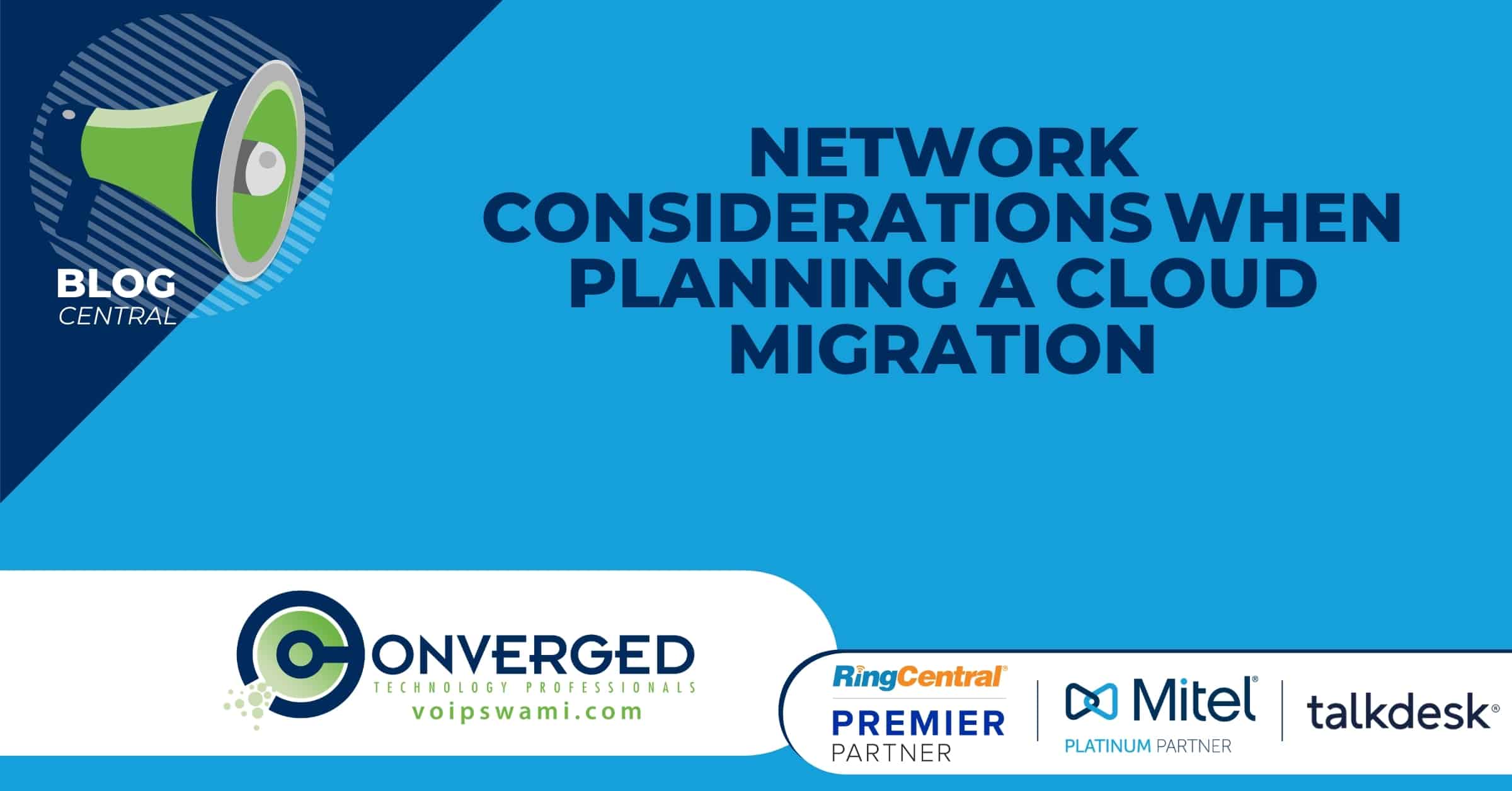The cloud is revolutionizing how we use technology and communicate. In an increasingly mobile world, it is transforming our communications technology from PBXs to soft phones because of how well it provides on-demand resources. Cloud based communication’s most salient benefits are ease of scaling up or down, cost optimization based on usage and reducing upfront investment costs.
However, with all of these benefits, there are still several challenges to overcome as organizations make their move to the cloud.
Migrating to the cloud isn’t as simple as a rip-and-replacement of a legacy PBX.
There are many factors to plan out before the implementation begins: such as preparing end users, assessing security concerns and arranging the network for traffic changes. To hit a snag on any of these issues risks slowing down the migration and diminishing the return on the investment from reduced productivity.
Below are several networking considerations to keep in mind while planning a cloud migration.
Networking Requirements
The network is the core structure for any cloud solution because it supports every resource and maintains access to all services, in-house or vendor provided.
When moving to the cloud, think of which networking services you want to keep in-house and which to hand over to the cloud vendor to provide. For some teams, it makes sense to offload all of them. Other organizations might need to maintain some services in-house for security or safety purposes.
In preparation for the cloud migration, be sure to evaluate application dependencies, perform various baseline analyses and create traffic pattern projections. Also, investigate what will be best for end-users throughout the network and assess how much work the IT team will take on during and after the migration.
Doing this research early will facilitate optimum performance following service implementation. The analysis can also help to estimate bandwidth consumption costs, which is a frequently overlooked cost during initial budget projections.

Security Concerns to Think About
Securing the network in a cloud environment makes it necessary to include security concerns as a part of the network design. Traditionally, all services and devices are protected behind a corporate firewall. Access to the network is directly controlled and supervised in a structured, centralized environment.
However, in a cloud environment with hypermobile users, access and services will operate beyond the firewall. This increasingly common set-up alters the focus of security from a well-structured perimeter to a fluid, shifting system of individual users and devices. It is important to prepare accordingly for this flexible, dynamic network environment.
Strict security frameworks recommend that every device, user, workload and network should be treated as untrusted, so there must be extra measures to protect data transmitted within these nodes. Some recommendations to consider are: authentication wherever possible, logging and monitoring all activity, and
encryption of the actual data.
While UCaaS can reduce certain risks associated with analog phone lines, the cloud vendor's practices can further combat threats and keep users on your network safe. Be sure to assess how the provider protects their clients and if their security support is appropriate for your particular needs.
Hybrid Transition Environments
The cloud requires bandwidth to operate and many organizations underestimate how much they’ll need. During a cloud migration, typically some services remain on premise as others are moved to the cloud. Thus, the network will need to be a hybrid environment to handle workloads during the transition.
There must be enough bandwidth to support seamless, uninterrupted communication between on premise and cloud workloads. Also, make sure to verify that the vendor can support a hybrid migration if you need to blend phone technologies. Hybrid PBX are growing in popularity for enterprise and could offer a best of both worlds' scenario with the right deployment.
Continuous Monitoring
Even after services are moved to the cloud, they need to be monitored just as they were on-prem. While highly reliable, cloud services are not foolproof. Organizations will need ways to track and identify issues to resolve them proactively.
Because cloud technologies are dynamic, real-time tracking of bandwidth utilization, dropped packets, and network latency is crucial to ensure peak performance. If your team is running a hybrid environment, monitoring communication between the on-prem and cloud services is even more critical. A failed or latent connection could have a severe impact leading to service interruption.
High Availability and Redundancy Are Key
With an increasingly mobile workforce, service availability is crucial. Unplanned downtime could severely impact operations. A service disruption could sever internal communications, negatively impact customers and even halt revenue generation.
Organizations need to build redundancy into their network architecture to ensure uninterrupted service for both internal users and customers. Redundant cloud servers, services, and virtual networks minimize the risks of downtime.
Network Planning is Key
The purpose of implementing a cloud solution is to ease communication between users and other IT services. As the network underpins this communication, it is vital that it informs all solution design.
Want to learn more about preparing for a cloud migration? Call us at 877-328-7767 or message us here.
If you enjoyed this article you may also enjoy:
